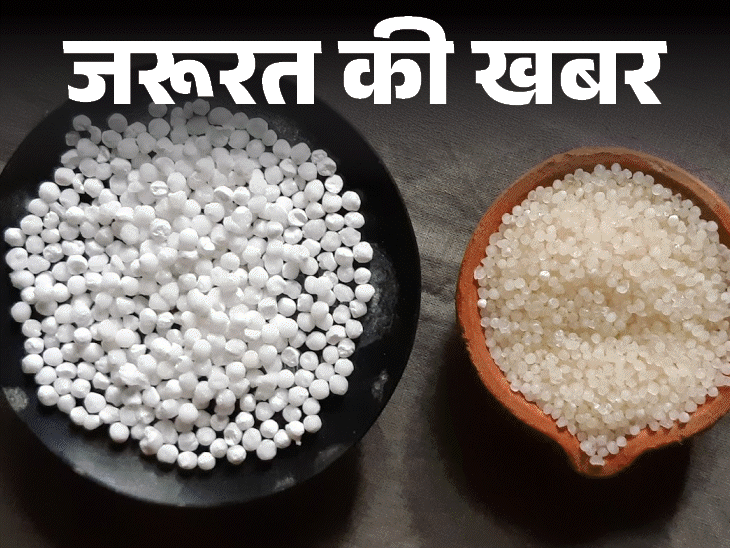6 minutes ago
- Copy link

Sago Fasting food is no longer, now it has become part of the healthy diet of many people. Sago khichdi, kheer or pakoras not only fill the stomach but also give immediate energy. But not every sago found in the market is pure. Some shopkeepers prepare it with polish and chemical for more profits, which makes it look good but can be harmful to health. In such a situation, it is important that you know how to identify the real and adulterated sago, so that you and your family are safe.
So let’s News of the need I will talk about how to identify adulterated sago. Will also know that-
- How is adulterated sago made?
- What health risk can be caused by adulterated sago?
Expert: Dr. Anu Aggarwal, Nutritionist and Founder of ‘OneDettude’
Question- What is sago and what is it made of?
answer- Sago is prepared from the root (cassava) of a plant called tapioca. Starch is extracted from its roots, which is processed by processing small pearls.
Question- How does adulterated sago become?
answer- To make some local and unauthorized manufacturers sago cheaper, chemicals, synthetic starch or potato and rice refined flour are added to it. Many times powder bleaching agents are also used in polish to make it shiny.
Question- What can cause harm by eating adulterated sago?
answer- Chemicals present in adulterated sago can affect gas, indigestion, vomiting-diarrhea and liver in the stomach. Eating this can cause food poisoning to children and the elderly.

Question- Can you identify adulterated and real sago at home?
answer- Nowadays adulterated sago is being sold at many places, adding harmful chemicals such as sodium hypochlorite, calcium hypochlorite, bleach, phosphoric acid and sulfuric acid. These are very harmful for health. So at home, you can identify real and adulterated sago by doing some easy tests.

Question- Why is sago eaten during the fast?
answer- During the fast, the body needs immediate energy food and the amount of carbohydrates in sago is high. It is light on the stomach and digest quickly. Hence it is included in fasting.
Question- What are the things to keep in mind when buying sago from the market?
answer- You can see it in some points below.
Stay packets
Always take sago that is well packed. Do not take open or torn packets as moisture or insects may come in it. If the packet is transparent (which is seen inside) it is better.
Be similar to sago
The right sago grains should be white, clean and the same size. Do not take broken, very small or big or black stains.
Strange smell is not coming
There should be no strange, sour or stale smell from sago. Do not buy it if smells.
Must see expiry date
See manufacturing and expiry date on packets. Try to be made recently and its expiry date is removed.
View brand and license
Take a well-known brand sago and also see a government approval mark on the packet.
Dry and different grains
Sago should be dry. If the grains are sticking together or moisture, it can deteriorate.
Question- Does adulterated sago make a difference in cooking?
answer- Yes, the real sago becomes soft and slightly transparent when cooked. But even after the adulterated sago is cooked, it remains hard from inside and can also be sticky.
Question- Is it safe to give sago to children?
answer- If the sago is pure then it can be given to the children because it gives them strength. But if it is adulterated, it can spoil the stomach of children.

Question- Can sago be safe at home for a long time?
answer- Yes, keeping the sago in a airtight compartment dry and cold does not spoil it for months. Especially during the rainy season, neem leaves or bay leaves can also be kept in the box to protect it from moisture and insects.
Question- Is there any monitoring from the government to prevent adulteration in sago?
answer- FSSAI (Food Safety and Standards Authority of India) in India monitors the quality of food products. If a product does not live up to the standards, it can be acted upon. Customers can also file a complaint on the FSSAI portal or app.
Question- Where to complain related to adulterated sago?
answer- If you suspect adulteration in sago of a brand, you can file a complaint on the FSSAI website (www.fssai.gov.in) or ‘Food Safety Connect’ mobile app. Also, the Food Inspector or Local Health Department of the state can also be contacted.
………….

Recently, a news went viral in social media and many websites that a warning would be written on snacks like Samosa, Jalebi and Kachori. It claimed that the Ministry of Health has issued an advisory under which warning will be written on these popular indigenous snacks. However, the government has now described these claims as fake. Read full news …



